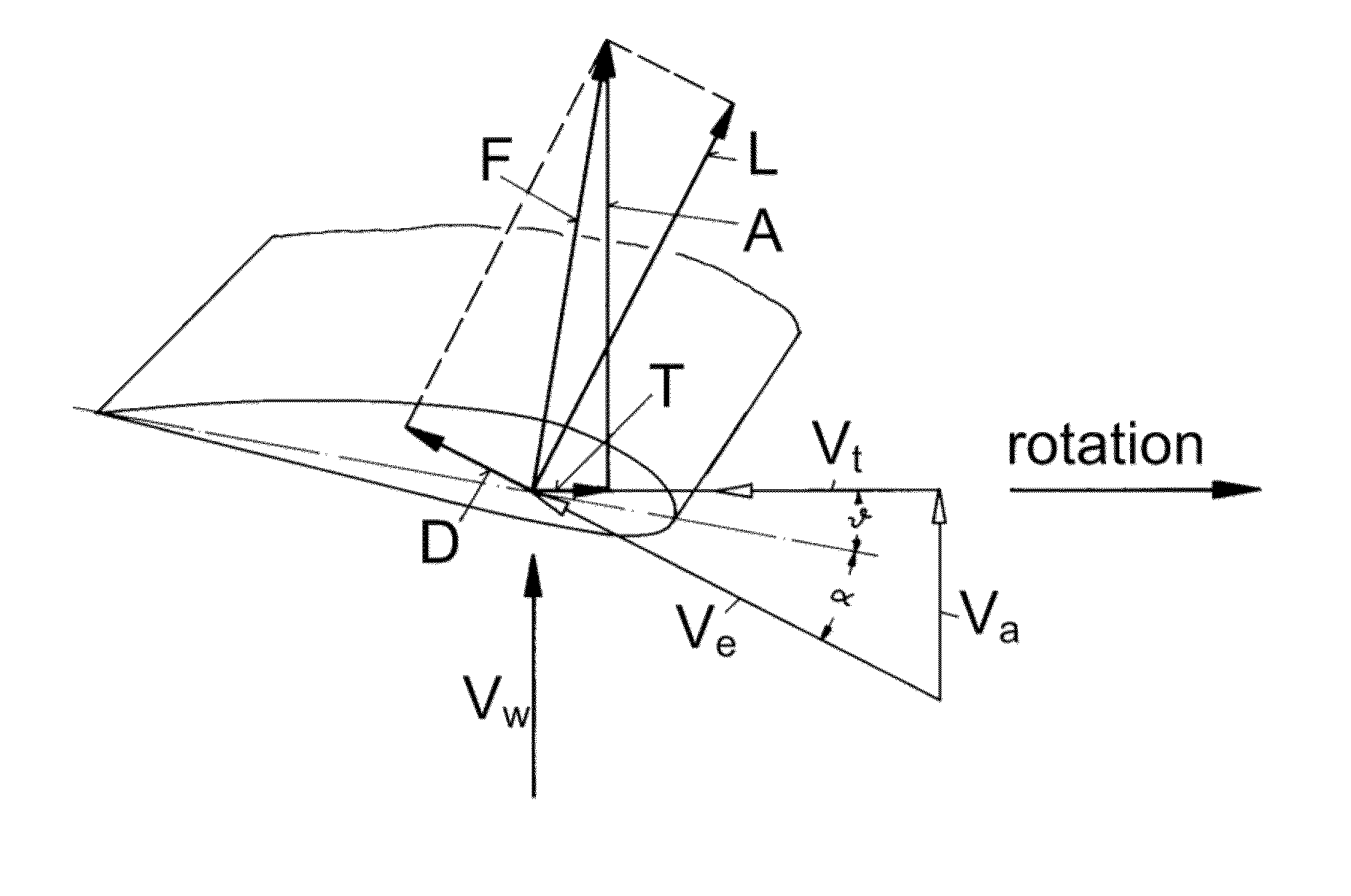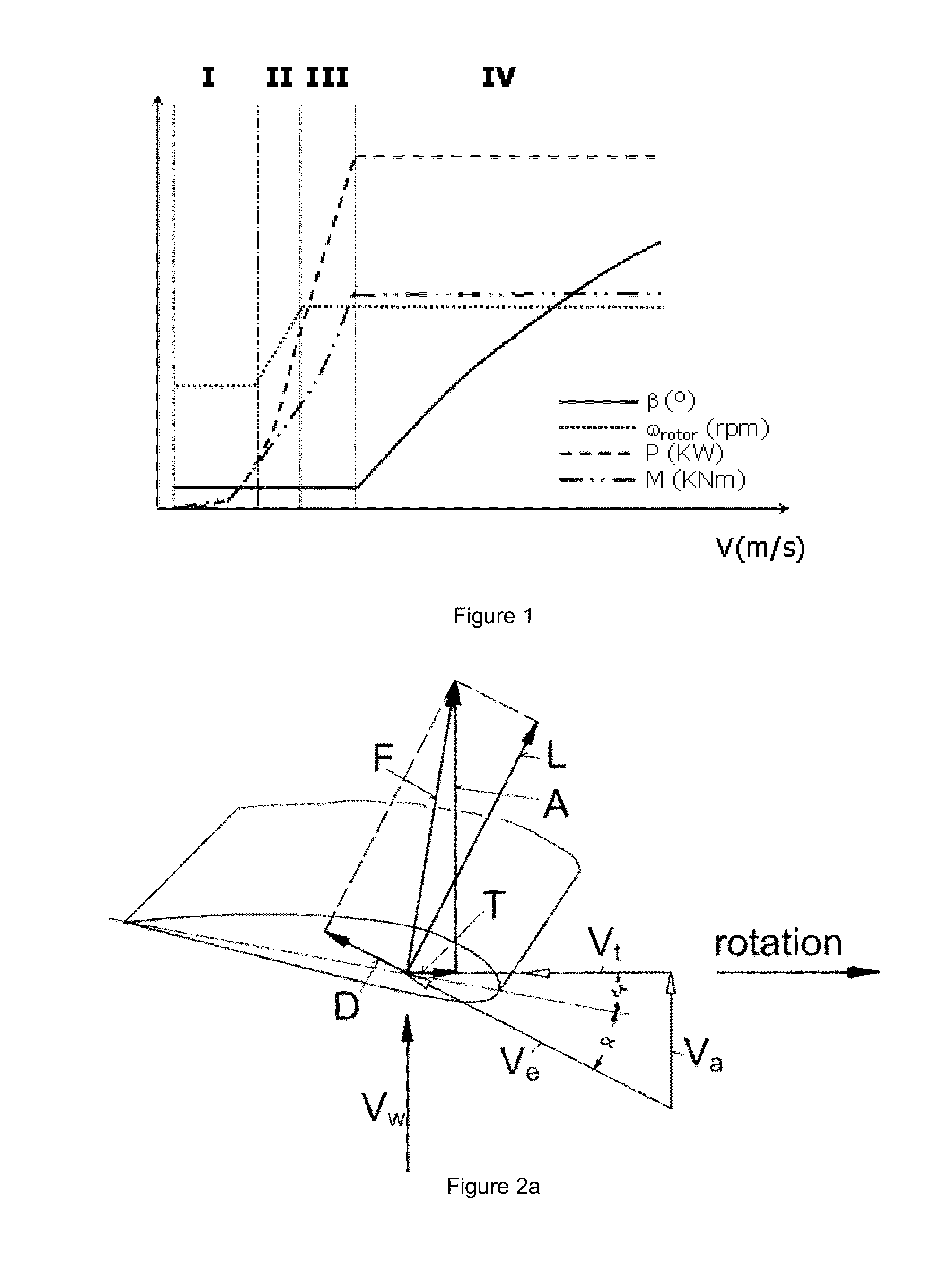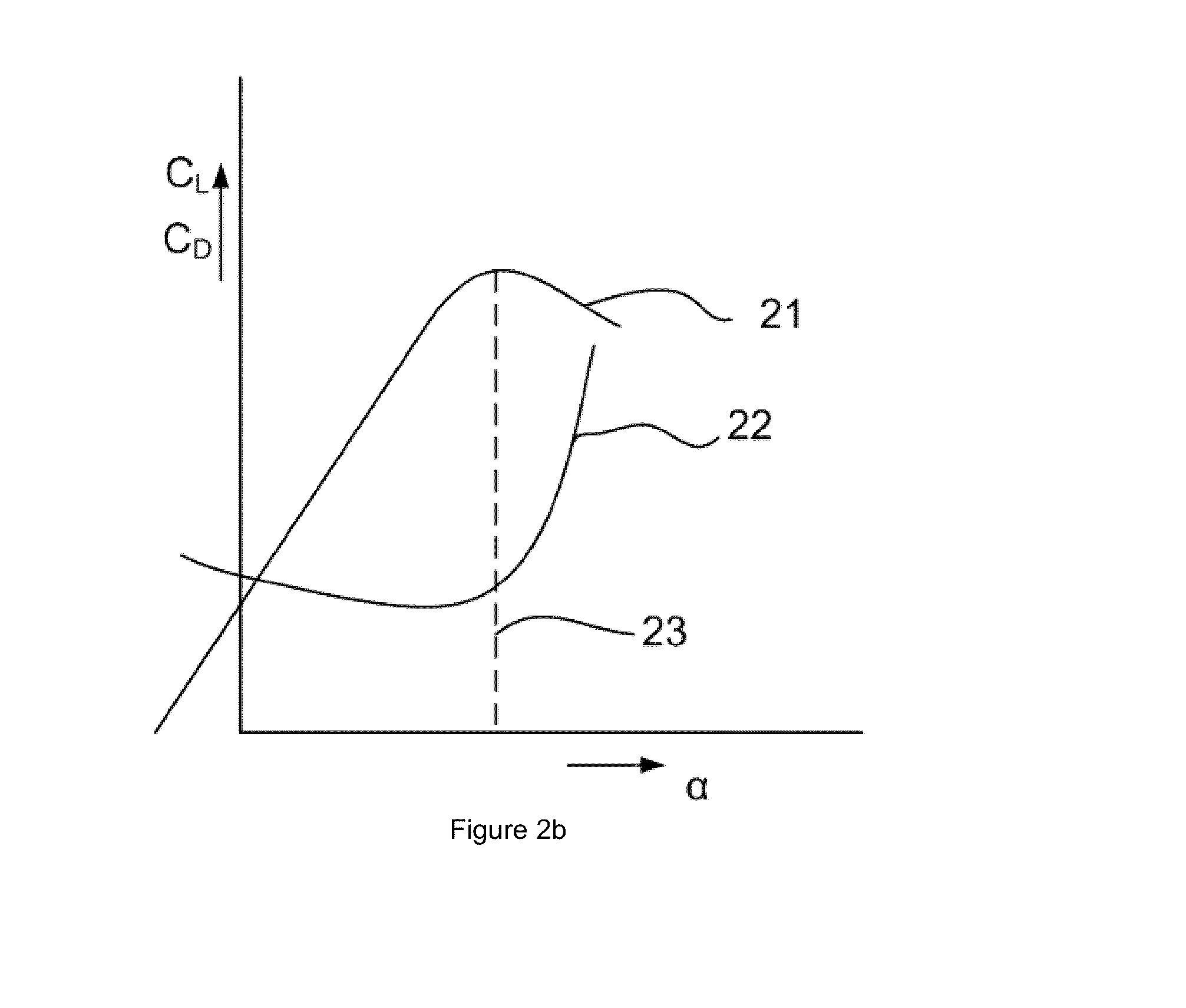Method of operating a wind turbine
a wind turbine and turbine blade technology, applied in the direction of wind turbines, non-positive displacement fluid engines, pump control, etc., can solve the problems of increasing drag, reducing the lift of a profile, and not necessarily optimal operation, so as to achieve the effect of further maximising energy
- Summary
- Abstract
- Description
- Claims
- Application Information
AI Technical Summary
Benefits of technology
Problems solved by technology
Method used
Image
Examples
Embodiment Construction
[0045]FIG. 3 illustrates a wind turbine 40 having a rotor with three blades 41, 42 and 43. A nacelle 45 is mounted on wind turbine tower 44. An anemometer 46 is mounted on the nacelle 45. The anemometer 46 may be used to measure wind speed, however because of its location on the nacelle, behind the rotor, the wind speed measured by the anemometer may vary a lot and in general may not be very reliable.
[0046]The wind turbine may have one or more pitch systems to rotate the blades 41, 42, 43 collectively or individually. FIG. 1 represents a typical power curve for a variable speed wind turbine with pitch capability. As mentioned before, above the nominal wind speed, the generator torque and rotor speed are maintained constant even though the wind speed increases. This is achieved by pitching the wind turbine blades, i.e. by rotating the blades along their longitudinal axes and with respect to the hub; by increasing the pitch of the blades, their angle of attack decreases and their cont...
PUM
 Login to View More
Login to View More Abstract
Description
Claims
Application Information
 Login to View More
Login to View More - R&D
- Intellectual Property
- Life Sciences
- Materials
- Tech Scout
- Unparalleled Data Quality
- Higher Quality Content
- 60% Fewer Hallucinations
Browse by: Latest US Patents, China's latest patents, Technical Efficacy Thesaurus, Application Domain, Technology Topic, Popular Technical Reports.
© 2025 PatSnap. All rights reserved.Legal|Privacy policy|Modern Slavery Act Transparency Statement|Sitemap|About US| Contact US: help@patsnap.com



